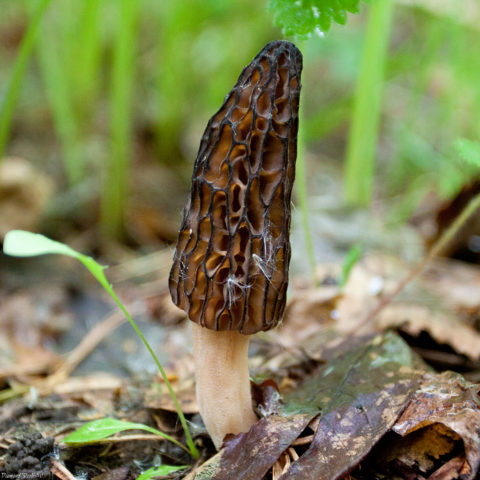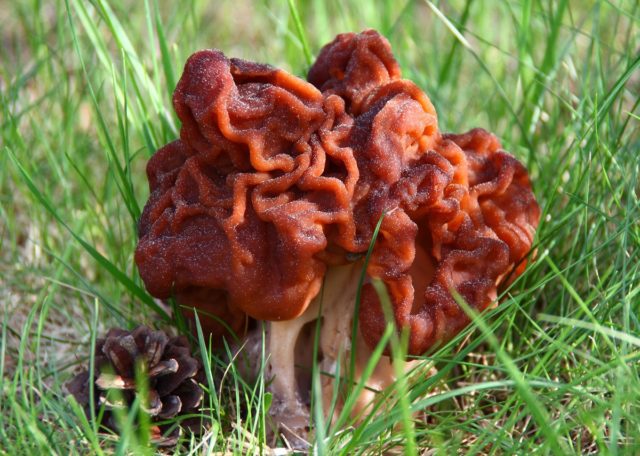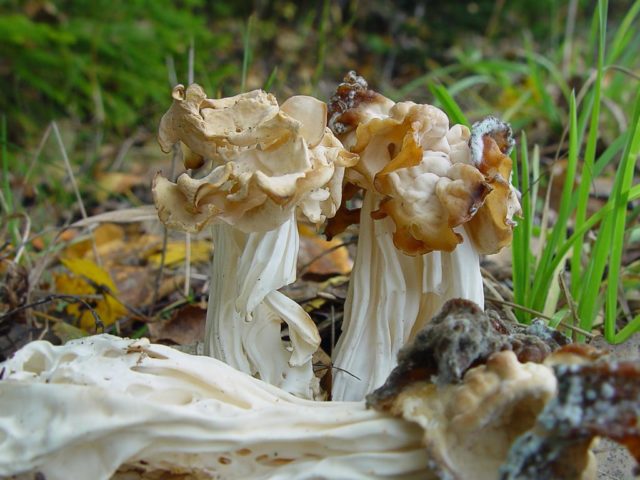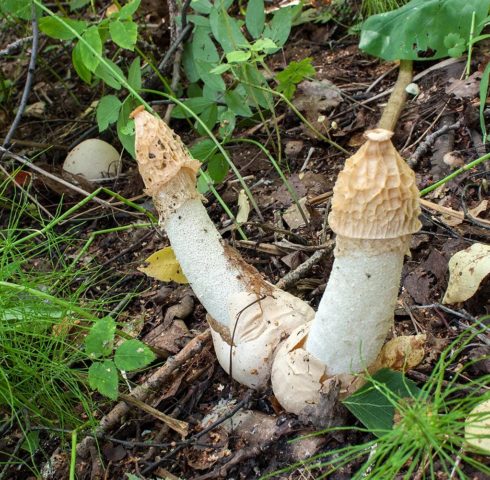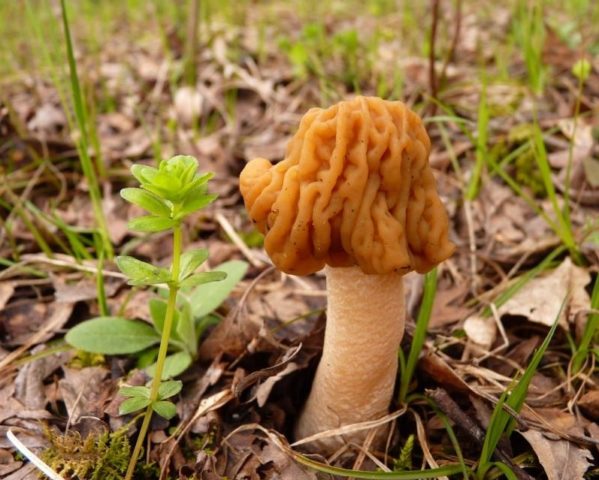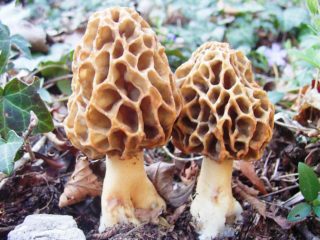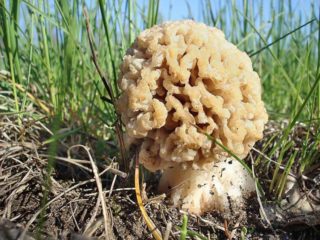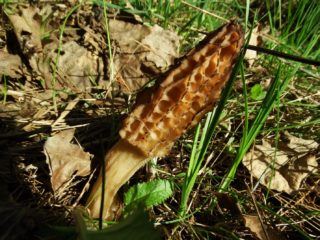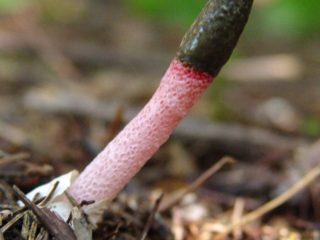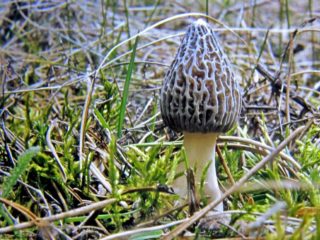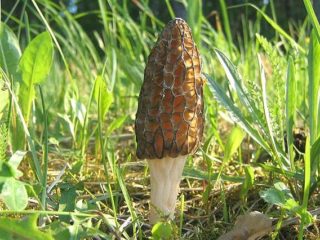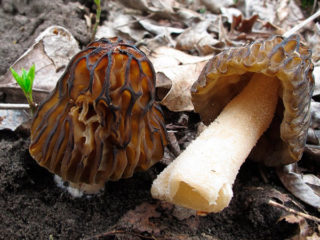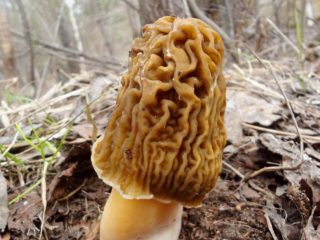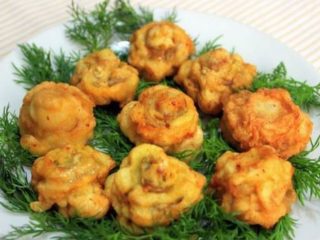Content
The tall morel is a conditionally edible mushroom that is quite rare in forests. It is distinguished by the characteristic shape and color of the cap. To prevent the mushroom from causing harm to health, it is necessary to prepare it correctly, always subjecting it to preliminary heat treatment.
Where do tall morels grow?
Tall morels appear from April to May. Sometimes they are found in June. This mushroom is quite rare, grows singly and does not form large groups. Therefore, it is collected in small quantities.
Morel prefers coniferous and deciduous forests with high levels of humidity. It can be found in clearings and edges overgrown with grass.Sometimes it grows in gardens and vegetable gardens, where suitable conditions are created: fertile soil, warmth and moisture. This mushroom representative often appears in mountainous areas.
What do tall morels look like?
The tall morel stands out with its unusual cap. It has a conical shape and pronounced cells. Externally, the cap resembles an elongated honeycomb. The edges of the cells stand out well against the general background. The height of the cap ranges from 4 to 10 cm. Its width is between 3 and 5 cm.
The cells on the cap are delimited by narrow vertical partitions. They are olive in color. The green-brown interior of the cells becomes brown and black as they grow. The older the mushroom, the more intense its color.
The diameter of the stem matches the size of the cap. Its height reaches 5 - 15 cm. Thickness is about 3 - 4 cm. The leg has a whitish tint; in adult specimens it becomes yellow. The spore powder is white or beige in color and ellipsoidal in shape.
Is it possible to eat tall morels?
The tall morel belongs to the conditionally edible mushroom category. It is eaten only after preliminary processing. The mass is boiled in salted water to remove harmful substances. Dangerous toxins that cause poisoning pass into the liquid. Therefore, the resulting broth must be drained and not used for food.
When using, take precautions. In addition to heat treatment, it is important to comply with consumption standards, according to which an adult can eat no more than 200 g of mushroom mass per day. The product is not recommended for children under 14 years of age, pregnant women, or during breastfeeding.
This mushroom is considered a heavy food that is difficult to digest. If you have chronic diseases and digestive problems, first consult a doctor.
The taste of the morel mushroom is high
Morels are considered delicacies. In European countries they are served in restaurants. The flesh of these mushrooms is thin and breaks easily. After heat treatment, the product acquires a spicy mushroom aroma, improving the taste of soups, sauces, side dishes and other dishes.
Benefits and harm to the body
Morel pulp is rich in vitamins, amino acids and minerals. Since ancient times, it has been used to treat farsightedness, myopia, and lens clouding. The product is used to obtain drugs to combat cataracts. Extracts from the fruiting bodies of the mushroom help with rheumatism and inflammatory processes.
If consumed in excess, the product causes weakness, vomiting, nausea, and stomach pain. In this case, consult a doctor. The victim is given first aid: given activated carbon, warm drinks, and the stomach is washed.
False doubles of tall morels
The tall morel has characteristic features that distinguish it from other mushrooms. However, its counterparts are also found in nature. Outwardly, they are similar to tall morels, but have a number of differences.
The main counterparts of tall morels:
- Line. It is distinguished by a brown cap, which has a rounded shape and numerous folds. Its leg is white, gray or yellow. The flesh of the mushroom is whitish and breaks easily. The main difference from morels is their irregular shape and pronounced mushroom smell. The stitches contain strong toxins that are not destroyed during processing. Therefore, it is not recommended to eat them.
- Lopastnik. It has an irregularly shaped fruit body.The hat of this representative has numerous beige blades. The leg is white, up to 9 cm high and up to 3 cm thick, with noticeable ribs. This variety is found in America and Eurasia. The double belongs to the conditionally edible category. It is used as food after boiling.
- Veselka vulgaris. The cap mushroom is up to 20 cm high. Its adult specimens have a long stalk with a bell-shaped cap. On top there is a disk with a hole. The cap has a honeycomb surface covered with mucus. Its color is dark olive. Only young vesels are used for food. Mature mushrooms emit an unpleasant putrid odor.
- Morel cap. The mushroom belongs to the conditionally edible category. A number of sources indicate its poisonous properties. An individual reaction is possible: poisoning and allergies. The mushroom is distinguished by a high stalk, which reaches 10 cm in length. His hat resembles a cap, its edges are free. Color: brown or yellowish.
Rules for collecting tall morels
The tall morel is harvested in early spring. Mushrooms hide along paths, in clearings and fire sites. Their growth period is 2 months. If the spring turns out to be hot, then the harvest begins in April.
In this case, choose young mushrooms that do not have rotten or dry areas. They have a white or beige stem and a brown cap. With age, the surface darkens. Brown caps are not suitable for consumption.
The morel is carefully cut off with a knife near the ground. It is not recommended to tear it by the leg: this leads to damage to the mycelium. It is better to look for tall morels in places far from roads, factories, and industrial zones. Fruit bodies absorb radionucleides and heavy metals.
Use
Tall morels need to be processed before use. They are cleared of forest debris and washed with water. Then pour water into the pan, add a little salt and put it on the fire. When the liquid boils, add the mushroom mass into it, which is simmered over low heat for 10 - 15 minutes. At the same time, harmful toxins are released from the fruiting bodies, which cause poisoning.
The boiled mass is placed in the freezer. It is convenient to store morels in dried form: they decrease in size and become lighter. When exposed to moisture, the pulp returns to its properties.
A variety of dishes are prepared from morels. They go well with meat, chicken, potatoes and other vegetables. The product is added to soups, side dishes, main courses, sauces, frying, stewing, and boiling.
Conclusion
The tall morel is a rare mushroom from the category of conditionally edible. It is collected on forest edges, next to fallen trees, and roadsides. The product is consumed in food after heat treatment, which removes harmful toxins.
